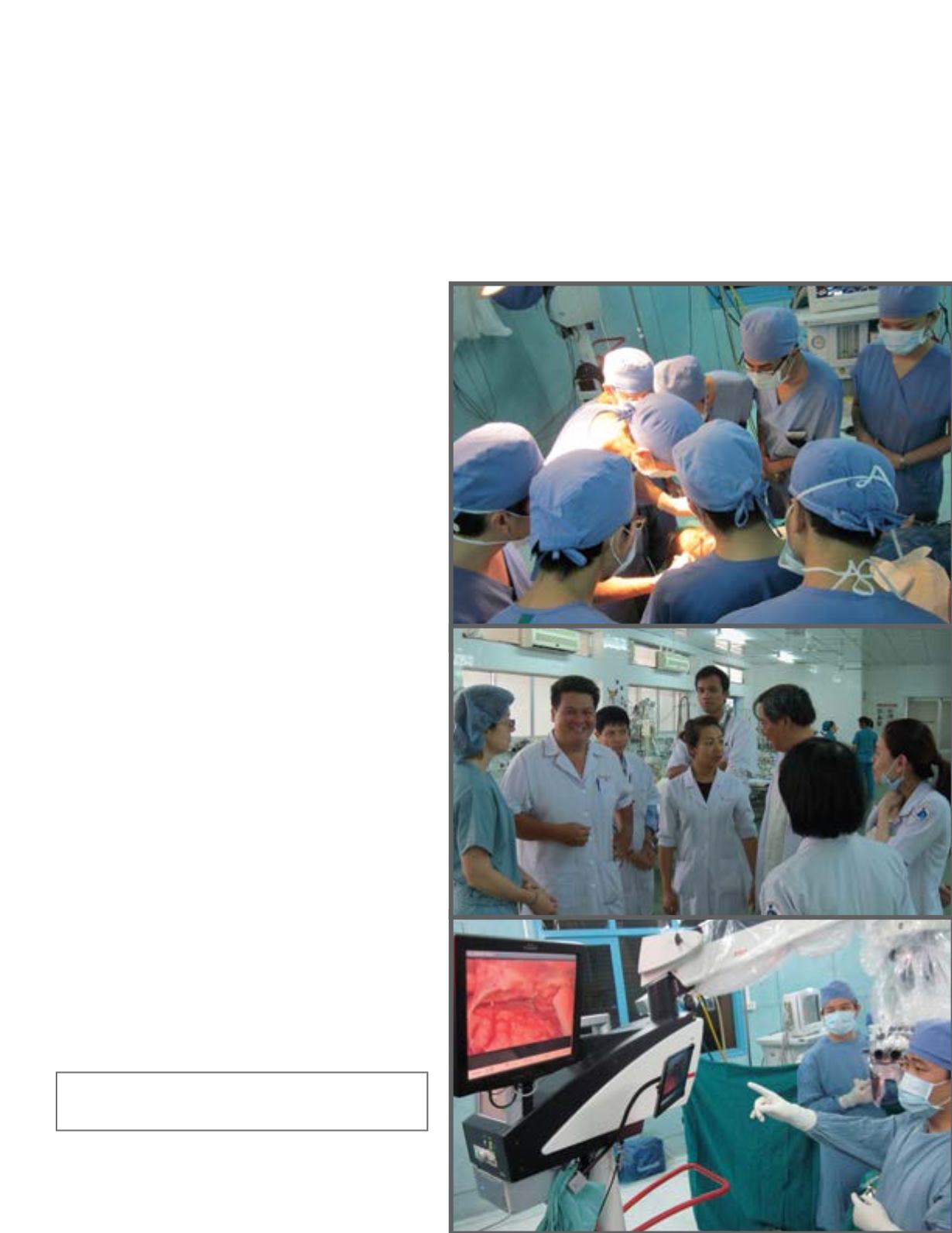

6
to observe procedures, discuss cases, and attend meetings
and continuing education conferences. The usual stay
is three months, during which time they are housed in
apartments near the Children’s campus at the hospital’s
expense. “We try to get them exposed to as many things as
possible while they’re here,” Johnston said.
For the future, Johnston wants to broaden Children’s
presence at its partner hospitals and extend the program
beyond surgery and into other pediatric divisions.
More information is available at
www.childrensal.org/global-surgery-program .A VIRTUAL PRESENCE PROVIDES REAL-TIME
SURGICAL CONSULTS
A crucial component of the Children’s of Alabama global
pediatric surgery outreach initiative is Johnston’s use of
technology that allows him to create a real-time presence
in operating rooms on the other side of the world. Virtual
Interactive Presence and Augmented Reality, or VIPAAR,
is an internet-based telemedicine system that employs
smart phones, tablets and standard internet to stream
video between Birmingham and remote sites. It was
originally developed by Bart Guthrie, M.D., Professor of
Neurosurgery at the University of Alabama at Birmingham,
and has since been commercialized for use in multiple
applications by the Department of Defense, Walmart,
Medtronic and other large corporations. How does VIPAAR
work? Surgeons at Children’s Hospital #2 in Ho Chi Minh
City use an iPad to stream real-time images of surgical
procedures. Johnston follows the procedure from his tablet
and can advise as needed. “I can interact with surgeons in
Vietnam during the actual surgery,” he said. “It’s like I’m in
the OR with them. We only use it for neurosurgery now, but
we hope to adapt it to be valuable for other surgeries as
well, specifically laparoscopy and microsurgery.” Details of
the initiative, the first of its kind in the world, were recently
published in World Neurosurgery.
This unique initiative was made possible through the
generous support of Phillip and Heather McWane.
















